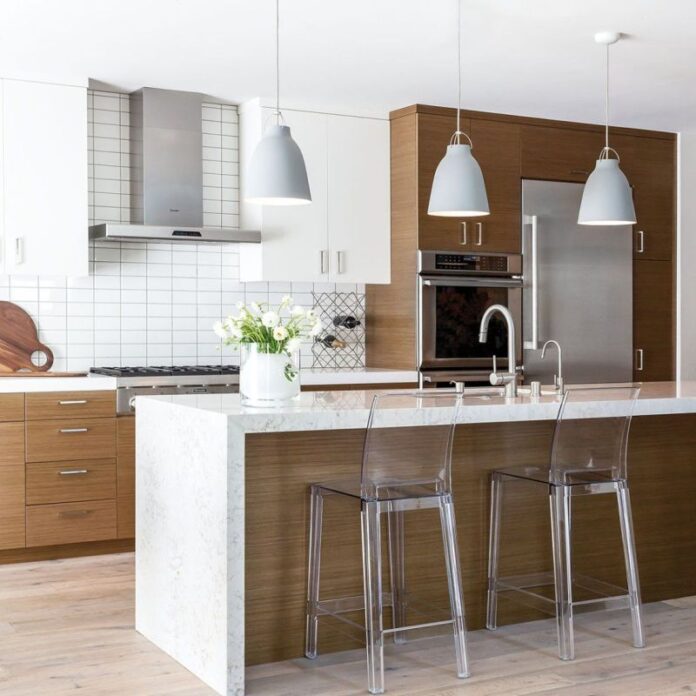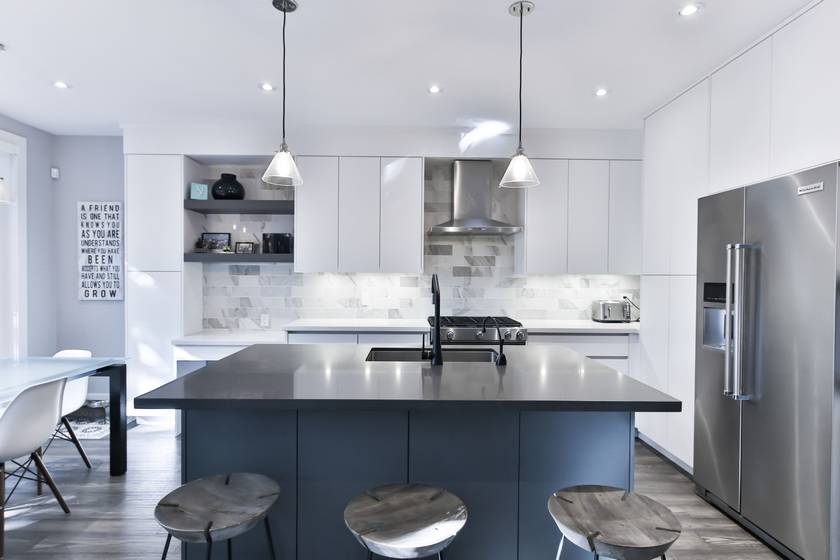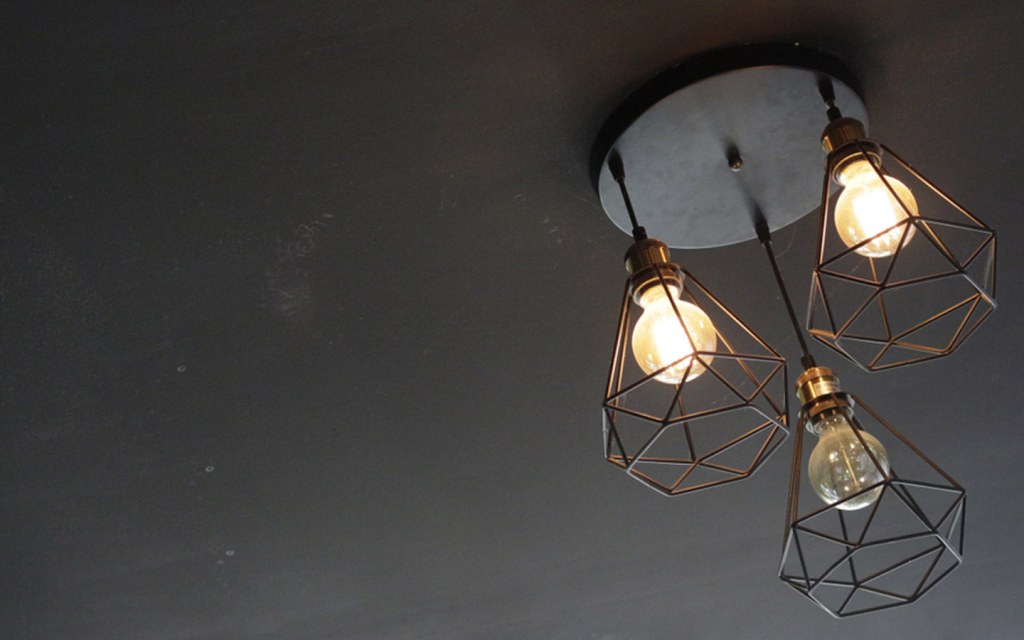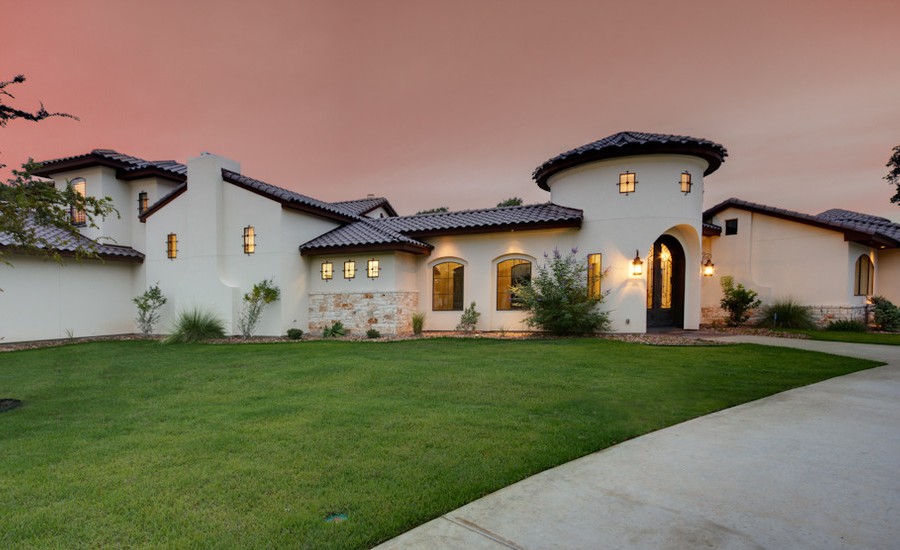What exactly is a pendant light? While it can encompass many different lighting types, the simplest way to think about them is just that they’re fixtures which are hung from the ceiling by a chain, rod, or cord. Other things will determine the exact type it is, such as its shape, size, and number of lights. Normally, though, a pendant will feature just a single light source. While this may make them seem like a pretty cut and dry category with few differences, read on about the different pendant light types and you’ll see how that couldn’t be more untrue.
1. Drum Pendants
Take one look at a drum pendant light and you can quickly see where they get their name. These will typically feature fabric which is stretched around a round frame, usually made of metal.
Since they’re mostly open on both the top and bottom and won’t provide a focused light, in most cases you’ll see drum pendant lights used for ambient illumination. If you’ve fallen in love with the shape but need directed light, make sure to look for a closed top drum pendant.
The majority of drum pendant lights are large, so they’re not normally hung in multiples. This does, however, make them a great fit for making a stylish statement in your foyer or living room. Just be sure to choose a pendant with a shade that fits your room’s decor.
2. Globe Pendants
You can quickly recognize a globe pendant light because they are completely round. Also called sphere or orb pendants, you’ll find them in many different styles ranging from mid-century and vintage, all the way to farmhouse and modern.
Since most globe pendants will be cages, they’re normally appropriate only for ambient lighting placements rather than task-based. Try installing a globe pendant in your entryway to give visitors a gorgeous, eye-catching welcome to your home.
3. Dome Pendants
For dome pendant lights, imagine a globe light which has had the bottom half removed. They’re terrific because their shape allows them to be used in settings where both style and a focused, usable illumination are important. The inverted bowl shape provides for a directed, even light while still giving designers plenty of material with which to get creative. Dome pendants are a wonderful way to beautify your entryway or living room, or can be hung in multiples over your kitchen island or dining room table if you go with domes smaller in diameter.
4. Exposed Bulb Pendants
Also called “hanging bulbs,” exposed bulb pendant lights have grown significantly in popularity in the past decade as minimalist and industrial styling has taken off in home decor. Obviously, they consist of little more than the bulb and a simplistic, very minimal fixture to screw into. That may make it sound like there’s not much room for creativity with exposed bulb pendants, there is actually room for you to leave a personal touch.
First, look for differences in the hanging method. A boldly colored rod will make a much different statement than a dark simple wire, for instance. Second, the bulb shape you choose can instantly change the impact of the pendant. Finally, hang them in multiples with different lengths and you’ll achieve a fantastic clustered look. These reasons illustrate why exposed bulb pendants are a great choice for someone who wants to get creative on a budget.
5. Mini Pendants
This is a category where the pendant’s shape can vary a lot, and only its size is important for classification. Any of the above pendant light types could also be a mini pendant, but there’s still some important things to know about this subset. When would you use mini pendant lights? When you need a directed source of light evenly distributed is the most common reason, though you’ll also see them used when someone wants to get creative but is on a bit of a budget.
You can try using mini pendants of different shapes and types, or go with the same pendant and express yourself by having fun with their arrangement. Put them in a straight line at the same length for a clean, modern look, or close together with different hanging lengths for something more eclectic and artistic. A straight line arrangement is best over your kitchen island or tables, while clustered looks best in a living room or foyer.
Now that you’ve learned about the different pendant lighting types available, you can get to the part you’ll really enjoy: the search process! As you do your browsing, keep in mind both where you’ll be placing the pendants, and also your budget. This will be helpful for determining how many you should buy, and how large they should be. With careful planning, they’ll be a treasured addition to your home for years to come. Enjoy!




















